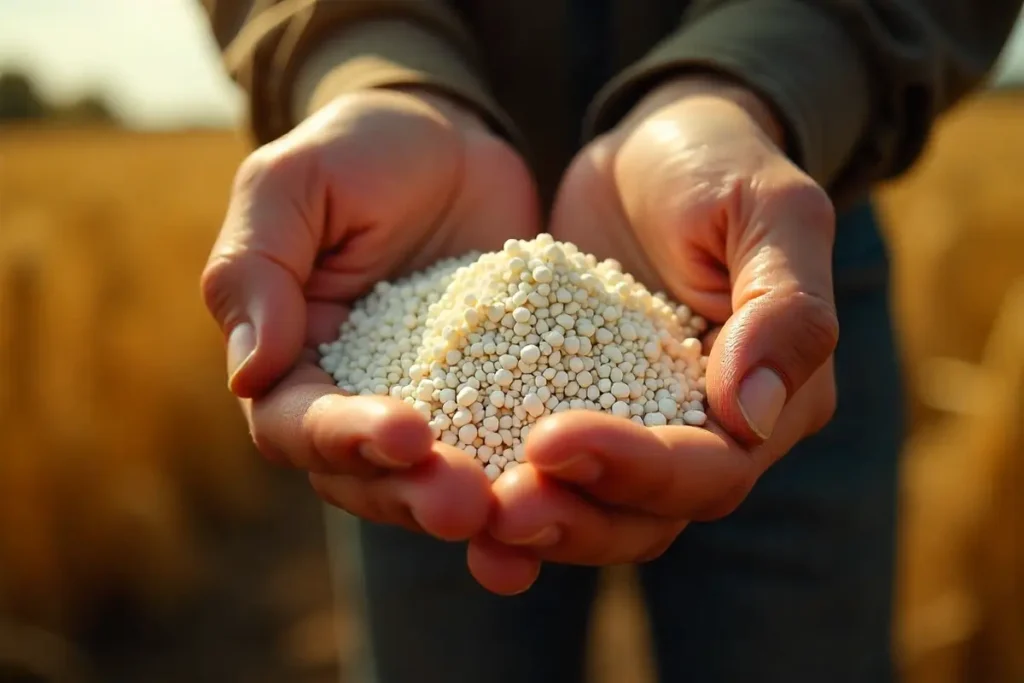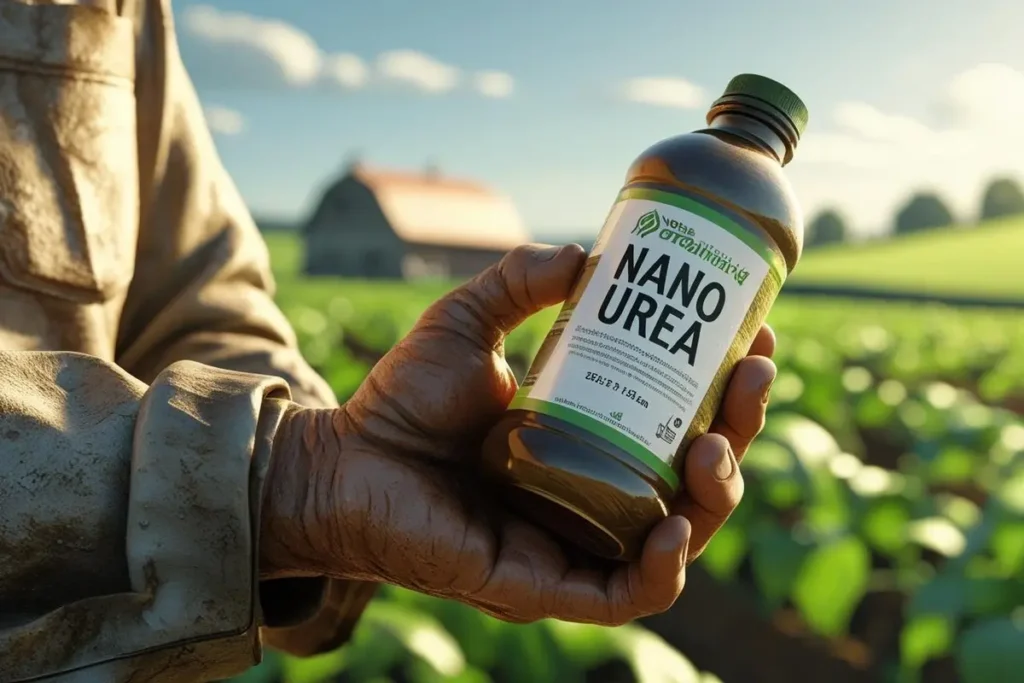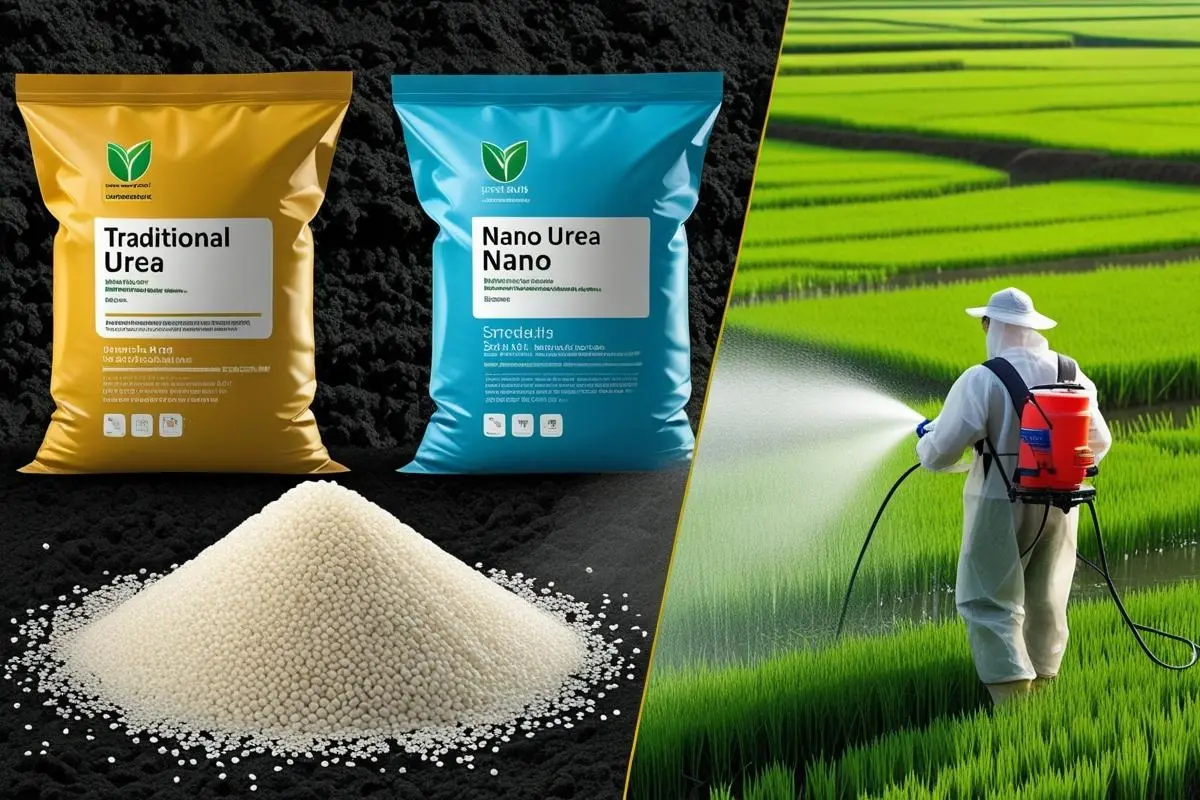Urea has been the backbone of modern farming for decades, supplying crops with the nitrogen they need for healthy growth and higher yields. Farmers across the world have long relied on traditional granular urea for its affordability and effectiveness.
However, a new alternative nano urea is now making waves in the agricultural sector. Developed using nanotechnology, this liquid fertilizer promises to reduce wastage, improve nitrogen use efficiency, and minimize environmental impact. But does it really outperform the conventional option? In this article, we compare nano urea vs traditional urea to help farmers decide which is truly better for their fields and their profits.
Table of Contents
What is Traditional Urea?

Traditional urea is a solid, white, crystalline fertilizer containing about 46% nitrogen, making it one of the most concentrated nitrogen fertilizers available. It is produced from ammonia and carbon dioxide and is widely used in agriculture due to its high nitrogen content, quick solubility in water, and relatively low cost. Farmers generally apply it directly to the soil, where it breaks down to release nitrogen, promoting rapid plant growth and higher yields.
Advantages of Traditional Urea
One of the biggest advantages of traditional urea is its high nitrogen concentration, which means farmers can supply significant nutrients with smaller quantities. It is also cheap and easily available, even in remote rural markets, making it accessible for large-scale use. Additionally, traditional urea is compatible with most crops and soils, making it a versatile choice for farmers across different agricultural regions.
Disadvantages of Traditional Urea
Despite its benefits, traditional urea has some serious drawbacks. Its nitrogen use efficiency is relatively low; only about 30–40% of the applied nitrogen is absorbed by crops, with the rest lost through leaching, runoff, or volatilization into the atmosphere. This leads to environmental issues, such as water pollution and greenhouse gas emissions. Overuse of urea can also degrade soil health over time, reducing productivity in the long run.
What is Nano Urea?

Nano urea is a liquid fertilizer developed using nanotechnology to provide nitrogen to crops more efficiently. Unlike granular urea, nano urea contains nitrogen particles at the nanometer scale, which can be easily absorbed by plants through their leaves when applied as a foliar spray.
Advantages of Nano Urea
Nano urea requires much smaller quantities compared to traditional urea; just 500 ml per acre can partially replace a 45–50 kg bag of conventional urea. Its high absorption rate means less nitrogen is lost to the environment, reducing water pollution and greenhouse gas emissions. Being lightweight and easy to transport, it lowers storage and logistics costs for farmers.
Disadvantages of Nano Urea
Despite its promise, nano urea has limitations. It is not a complete replacement for traditional urea, especially for crops with high nitrogen requirements. Its effectiveness depends heavily on proper spraying techniques and timing, requiring farmer training and equipment. Currently, its availability is limited in many rural areas, and the long-term environmental impact of nanomaterials in soil is still under study.
Nano Urea vs Traditional Urea
| Feature | Traditional Urea | Nano Urea |
| Form | Solid, white crystalline granules | Liquid fertilizer |
| Nitrogen Content | 46% nitrogen | ~4% nitrogen (higher efficiency) |
| Application Method | Soil application (broadcasting) | Foliar spray (spraying on leaves) |
| Quantity Required per Acre | 45–50 kg | 500 ml |
| Nitrogen Use Efficiency | 30–40% | 80–85% |
| Wastage & Pollution | High nitrogen loss due to leaching, runoff, and volatilization | Minimal nitrogen loss, reduced environmental pollution |
| Storage & Transport | Heavy and bulk storage is required | Lightweight, easy to carry, and store |
| Cost | Lower per kg | Higher per litre (but less quantity needed) |
Which is Better for Farmers?
Choosing between nano urea and traditional urea depends on the crop type, soil condition, and farming practices. Traditional urea remains the most widely used nitrogen fertilizer due to its high nitrogen content, low cost, and easy availability. It can meet the complete nitrogen needs of most crops, especially those with high nutrient demands.
On the other hand, nano urea offers higher nitrogen use efficiency, lower wastage, and reduced environmental impact. However, it works best as a supplement to traditional urea, rather than a full replacement. Farmers who combine both using nano urea to partially replace traditional urea can cut fertilizer costs, improve crop health, and reduce pollution.
In short, for most farmers today, the smartest approach is a balanced use, relying on traditional urea for baseline nitrogen needs and using nano urea to improve efficiency and sustainability.








